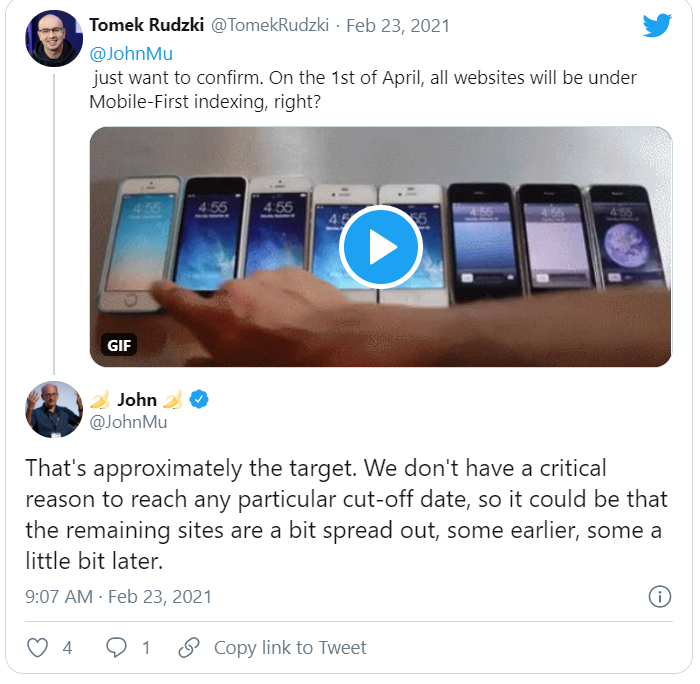About four and a half years ago, in November 2016 we announced in a short note that Google was launching an experiment to use the mobile version of a website as the main source of content. It was the first step in his mobile fisrt indexing project.
At the time it was a very limited experiment with very little impact on rankings. But finally the moment of truth has come.
What is Mobile First Indexing
As the expression indicates, it is a new form of indexing by Google according to which, from its launch, it will base its rankings on the mobile version of the websites instead of on the desktop version, as was the case. Until now.
This change responds to the new trend among users who show a greater preference in the use of smart phones and the drop in the use of desktop computers. And therefore, it will evaluate the search results exclusively on the basis of the information found on the mobile version of a website. In fact, currently more than half of searches occur from mobile devices in a trend that increases day by day.
Since its first experiments, mobile first indexing has been an ongoing effort in Google’s strategy. So far, it had already enabled mobile first indexing for a large part of the currently crawled sites and it has enabled it by default on new sites since 2019.
Google’s initial plan was to enable mobile first indexing in September of last year. But the arrival of COVID and the situation that the pandemic has caused, caused Google to delay this deadline, giving us more time to adapt our websites. In the middle of last July, as we explained in this article, those from Mountain View announced in their forum the date for the new change in indexing: March 2021.
The date is coming
Just yesterday, February 23rd, John Muller, Google’s Webmaster Trends Analyst, confirmed that we are approaching the moment of launching the indexing change. Even if it is not something that occurs on a specific date. It appears to be more of a progressive process.

John Muller was asked if all the websites would be moved before April 1. And he explains that “That’s approximately the target. We don’t have a critical reason to reach any particular cut-off date, so it could be that the remaining sites are a bit spread out, some earlier, some a little bit later.” Therefore, it is quite possible that some will see the changes during the month of March and others even after April 1.
How this indexing change will affect
This change to mobile indexing will most likely lead to some variations in Google rankings. This is an abbreviated list of the issues that Google already proposed in 2016 to take into account to address this change:
- Robot meta tags in mobile version
- Lazy loading in the mobile version
- Be aware of what you block
- Make sure main content is the same on desktop and mobile devices
- Review images and videos including:
- Image quality
- Alt attributes for images
- Different image URLs between desktop and mobile version
- Video markup
- Placement of images and videos
In the article Preparing for Mobile-First Indexing we elaborate on these issues in more detail.
At Sinapsis we are already prepared for mobile first indexing. You can easily check if your site is ready in the Google Search Console that will notify you of possible problems to solve.

